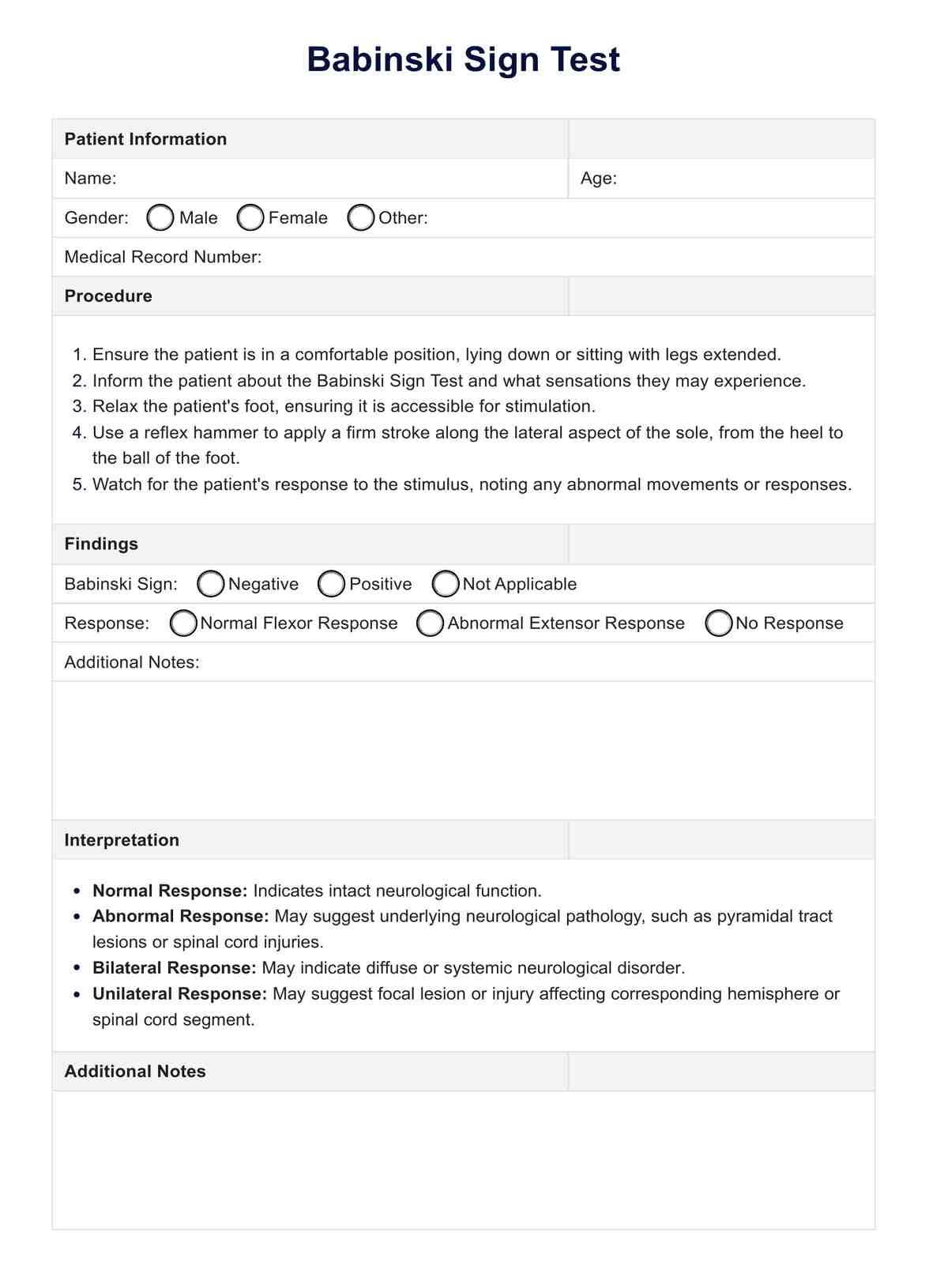A positive Babinski sign refers to the abnormal response of the toes during the Babinski Sign Test, characterized by the extension of the big toe and fanning of the other toes, indicating underlying neurological dysfunction.

Babinski Sign Test
Discover the Babinski Sign Test, its significance, and how it is performed with Carepatron's free PDF download. Learn more about this neurological assessment tool.
Babinski Sign Test Template
Commonly asked questions
In Amyotrophic Lateral Sclerosis (ALS), the presence of the Babinski sign indicates upper motor neuron involvement, reflecting the degeneration of motor neurons within the corticospinal tract.
To check for the Babinski sign, a healthcare practitioner applies a firm stroke along the lateral aspect of the sole, from the heel to the ball of the foot, using a reflex hammer or similar instrument, and observes the patient's response.
EHR and practice management software
Get started for free
*No credit card required
Free
$0/usd
Unlimited clients
Telehealth
1GB of storage
Client portal text
Automated billing and online payments











